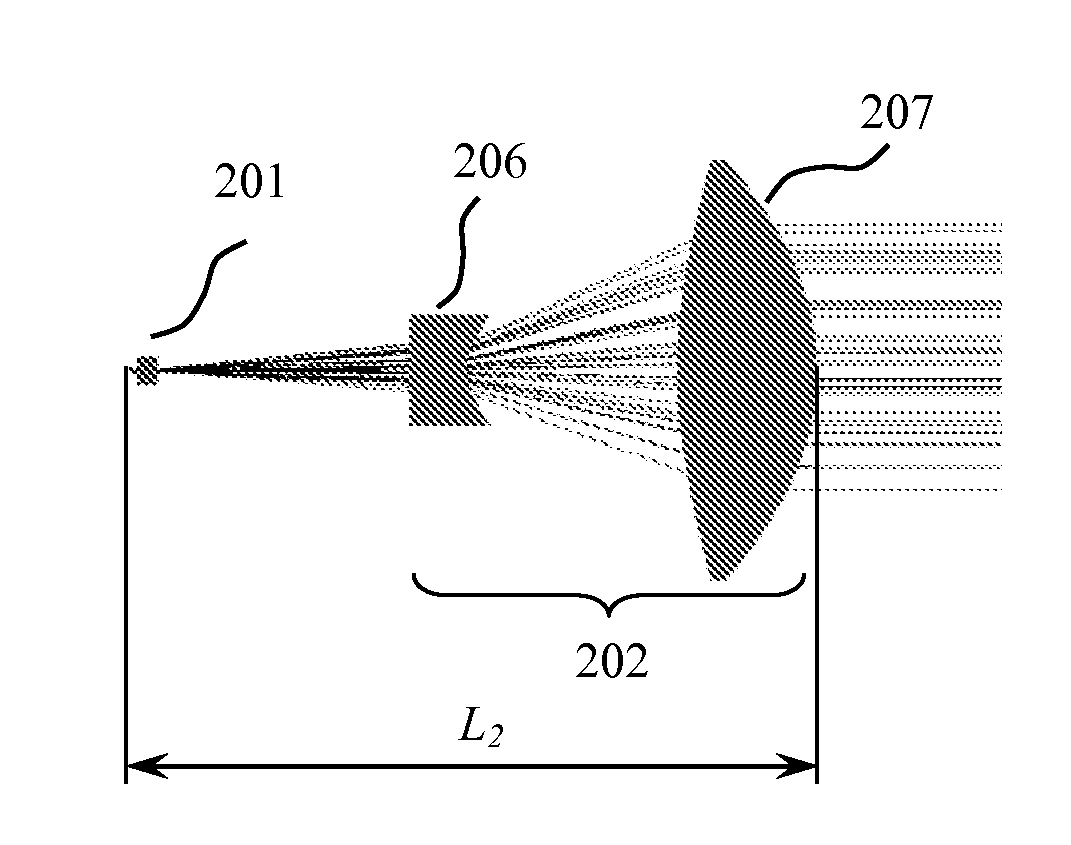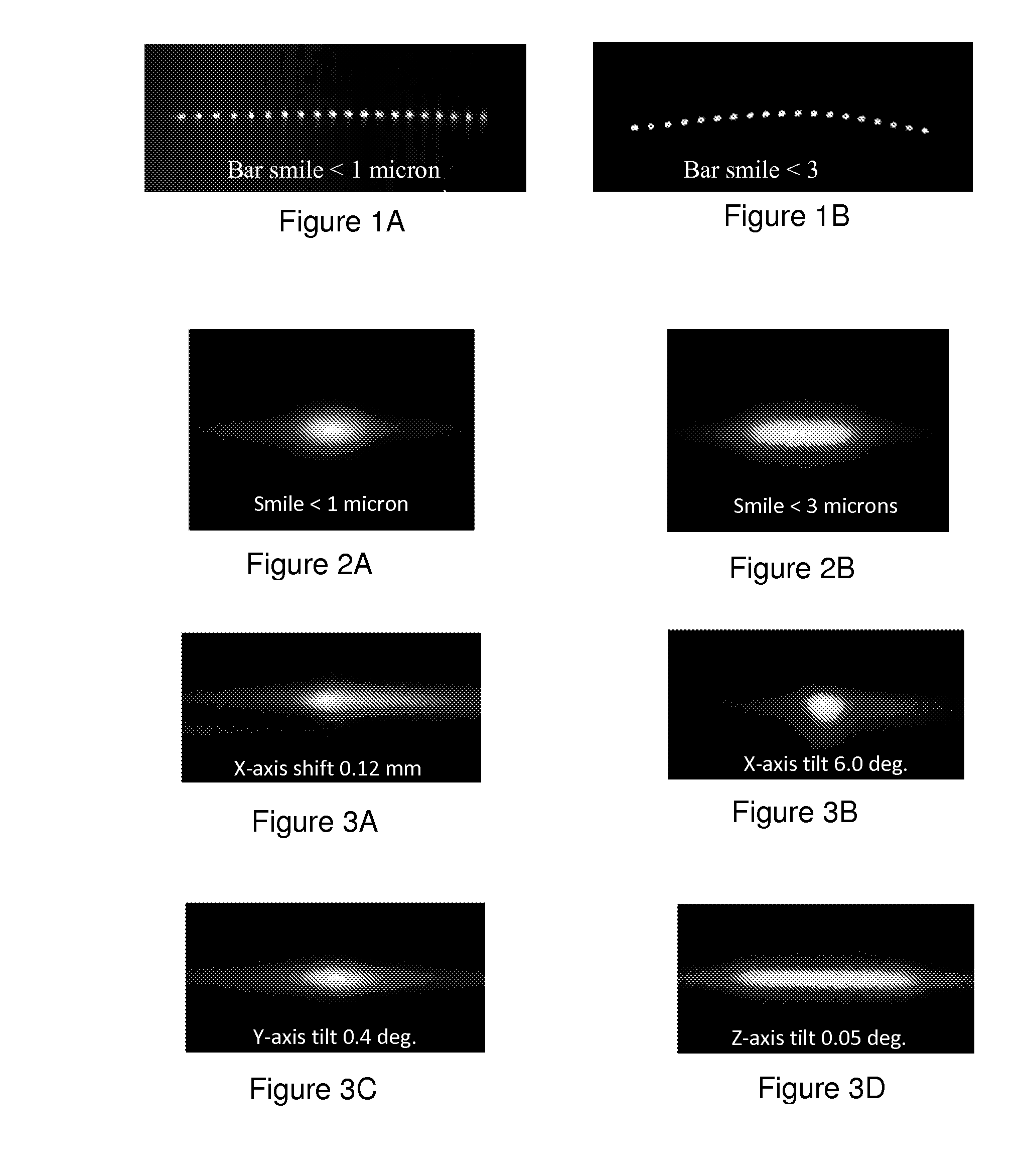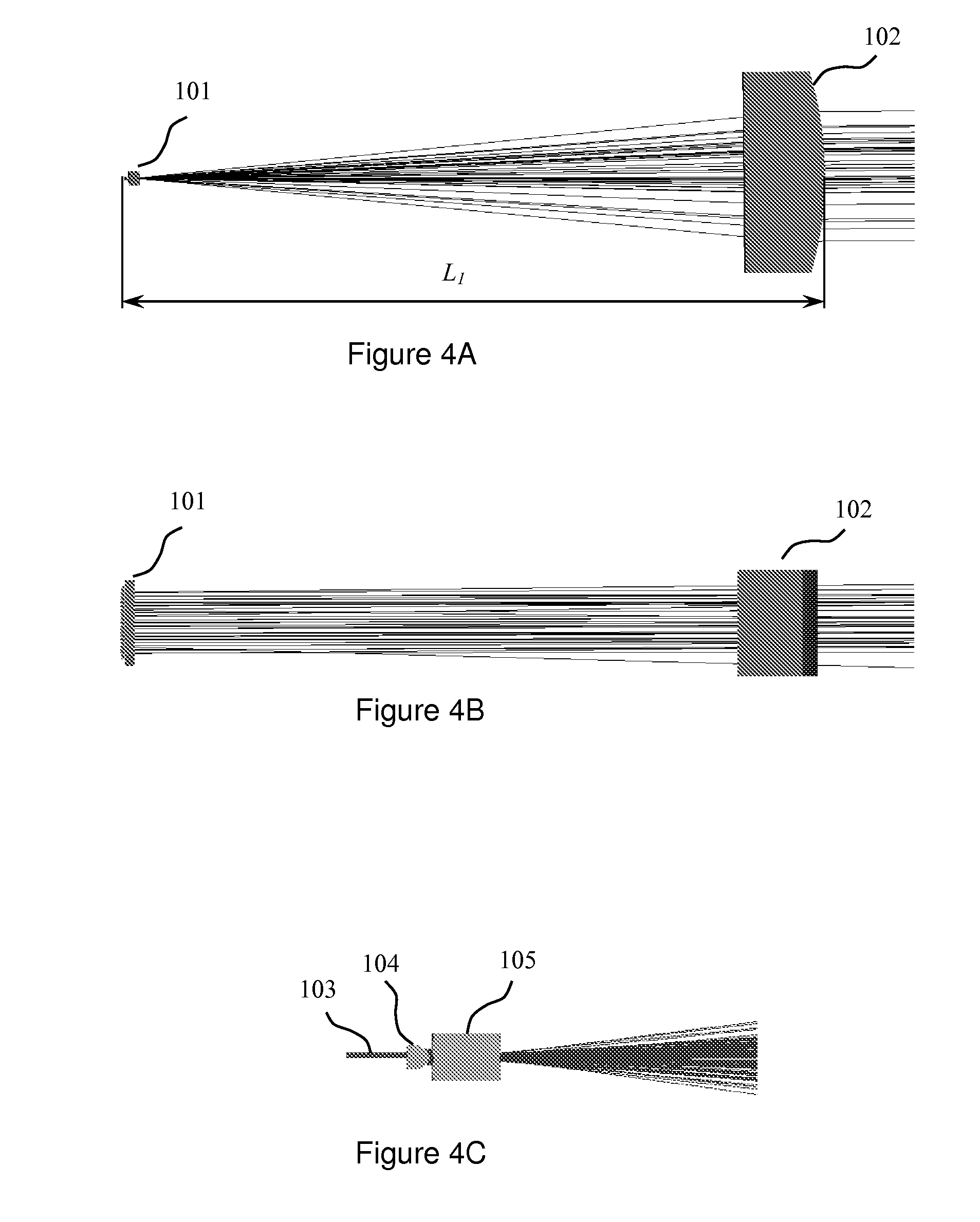Free-space combining of laser beam radiation
a free-space and laser beam technology, applied in the field of diode laser beam combining technique, can solve the problems of high undesirable effects, increase in the number of combined emitters, and single-mode emission with diffraction-limited beam quality, and achieve the effect of reducing power consumption and generated heat, and high combined beam power density
- Summary
- Abstract
- Description
- Claims
- Application Information
AI Technical Summary
Benefits of technology
Problems solved by technology
Method used
Image
Examples
first embodiment
[0038]According to the present invention the required power density in the far field of the combined beam is achieved with a limited number of emitting diodes and a commensurate reduction in power consumption and heat dissipation by selecting appropriate focal lengths for the collimating optics, as well as the lateral spacing between the emitting apertures within the diode bar.
[0039]The far-field angular beam size θFF is defined as a combination of the diffraction term θFFDiffr and geometrical termθFFGeom:
θFF=θFFDiffr+θFFGeom (1)
[0040]The diffraction term θFFDiffr represents the contribution to the angular beam size by diffraction effects on the optics apertures, and is proportional to the operating wavelength λ and is inversely proportional to the effective aperture size Deff:
θFFDiffr=λDeff(2)
[0041]The second term θFFGeom represents the contribution to the far-field angular beam size due to misalignment effects and component imperfections. The geometrical beam divergence term in ...
second embodiment
[0053]Several laser applications require high combined collimated beam far field power density at the lowest consumed electrical power and heat dissipation levels within the module with a precisely controlled far field aspect ratio a. The beam aspect ratio a is defined as the ratio of the beam cross-sections in the two orthogonal lateral directions. Several applications may require the combined output laser beam to be square-shaped, with approximately equal beam divergences in the two orthogonal lateral directions and an aspect ratio α=1.
[0054]In the slow axis direction the output beam divergence is dominated by the geometrical divergence term. The far field beam divergence in the slow axis direction can de estimated as:
θSA=wSAfSA(5)
where wSA is the width of the individual emitter apertures in the slow axis direction, and fSA is the focal length of the cylindrical lens that collimates the combined output laser beam in a direction perpendicular to a junction plane after the beam tran...
third embodiment
[0059]As discussed in connection with the previous embodiment, long focal length cylinder collimating lenses are employed after the beam transforming micro-optics to produce low diverging far field combined beams in the direction perpendicular to a junction plane. The long focal length of the cylindrical collimating lens after the beam transforming micro-optics leads to a significant increase in the axial size of the packaged laser module.
[0060]To reduce the axial module size while maintaining a low slow axis output beam divergence in accordance with the third embodiment of the present invention a composite collimating assembly after the beam transforming micro-optics is employed. The collimating assembly includes at least two cylindrical lenses, one with a negative optical power and one with a positive optical power. The collimating assembly may also include a mechanism to adjust the axial spacing between the positive and the negative lenses of the assembly. Adjustment of the axial...
PUM
 Login to View More
Login to View More Abstract
Description
Claims
Application Information
 Login to View More
Login to View More - R&D
- Intellectual Property
- Life Sciences
- Materials
- Tech Scout
- Unparalleled Data Quality
- Higher Quality Content
- 60% Fewer Hallucinations
Browse by: Latest US Patents, China's latest patents, Technical Efficacy Thesaurus, Application Domain, Technology Topic, Popular Technical Reports.
© 2025 PatSnap. All rights reserved.Legal|Privacy policy|Modern Slavery Act Transparency Statement|Sitemap|About US| Contact US: help@patsnap.com



